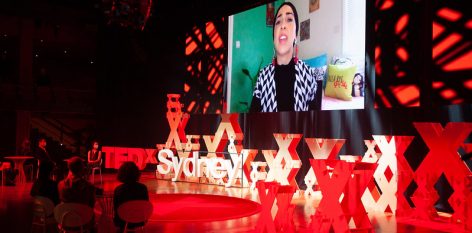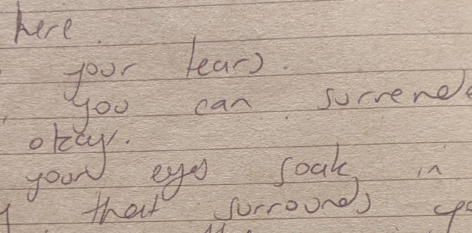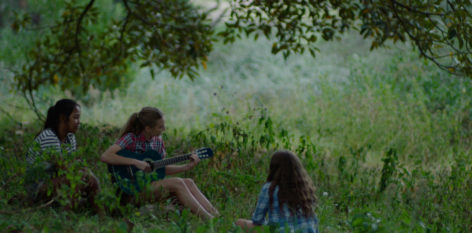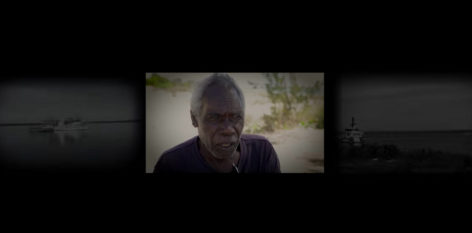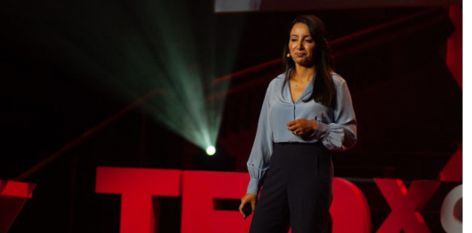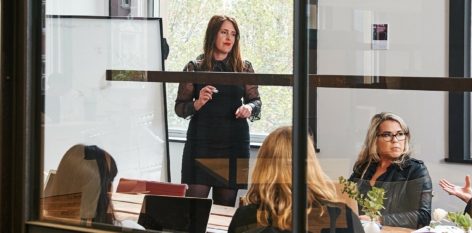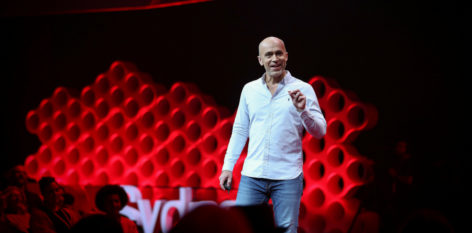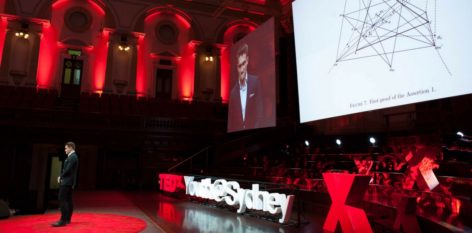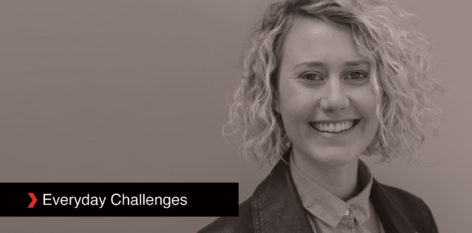“When you are failing, you are forced to be creative, to dig deep and think, night and day.” – Bill Gates.
Top creative thinkers lead with vision, novel ideas, courage, and determination. Creativity is becoming increasingly important in business amidst a rapidly evolving social, environmental, technological, medical, and political context. According to the World Economic Forum’s top 15 skills for 2025, creativity is one of the top five skills for the future of work.

TEDxSydney joins Alina Gozin’a, a Russian-born, Australian-based interdisciplinary artist, in conversation about insights from her experiences bridging the worlds of business and art. Gozin’a left a corporate career in banking and finance at PwC, to become a leading global creative, using photography, film, and art to tell stories.
She has worked with many organisations globally, including HBO, Stan, Madame Figaro, Forbes, AFR Magazine, Universal Music, Sony Pictures, Warner Bros, and notable figures, such as Sir Frank Lowy, Andrew Forrest, Anthony Pratt, Judith Neilson, and Kevin Rudd. Gozin’a is a co-founder of THE ART OF SEEING, delivering workshops that help global C-Suite leaders drive creative thinking and innovation.
So, what can business leaders learn from top creative thinkers? Gozin’a shares her perspectives on driving greater creativity and innovation in business.
The importance of exploring new ideas without constraints

Photo credit: Judith Neilson for AFR Magazine. Photo by Alina Gozin’a.
“If you change the way you look at things, the things you look at change.” – Dr. Wayne Dyer
The concept of seeing old things in new ways is a hallmark of successful innovation. Uber is an example where a new solution – crowdsourcing – was applied to an existing customer transportation need. Conversely, scientist Emanuel Goldberg applied his invention of the first plastic laboratory pipette jars, to a new context to create Nalgene water bottles made from safe, reusable and BPA free plastics.
“Creativity requires non-linear thinking, whereas too much structure restrains imagination. Our environment enables this, so by reducing the constraints of rigid work locations, hours, and hierarchies, we enable creativity. Similarly, if we reduce our need to be risk averse, it allows imagination and innovation to flow,” says Gozin’a. Designing environments that support people to think outside the box will allow them to challenge existing solutions, processes, business models, and ways of working.
What steps can leaders take to reduce constraints and encourage creative thinking?
- Start blue sky during initial brainstorming and defer constraint and feasibility discussions.
- Use ‘How might we’ statements to prompt divergent thinking around an opportunity area.
- Encourage experimentation and build a metered funding model that supports it.
- Talk about, learn from, and celebrate failure to build cultures that don’t fear failure.
- Get teams working on creative activities together, tapping into unconstrained thinking.
The value of bringing together diverse teams and skills

Photo credit: Andrew Forrest for AFR Magazine. Photo by Alina Gozin’a.
“When you need to innovate, you need collaboration.” – Marissa Mayer
As global workplaces move towards fluid talent ecosystems that support skill sharing and project-based teams, there is an increasing need for leaders to understand the skills of their team and create environments that enable collaboration, contribution and creativity.
Innovative and creative environments are built on this concept of creation through collaboration. Gozin’a highlights, “If we look at the way creative collaboration takes place in the art world, there can easily be 100 people on a film set. The days are long and often crew members don’t know each other, but everyone has implicit trust that the team is there to contribute their unique mix of skills and experience towards a shared vision. This offers lessons for the new world of work, where leaders are trusting their team to deliver irrespective of location and are collaborating in new ways”.
How can leaders nurture diversity and encourage skills-based collaboration?
- Support people to work in ways that maximise their creativity, energy levels and effectiveness, through flexible work hours, days, and locations.
- Design office spaces that promote and inspire collaboration. Provide digital collaboration tools, informal collaboration spaces, and rooms with flexible walls and furniture.
- Advertise and recruit for projects based on the skills required, rather than the roles and business lines people are expected to come from.
- Kick-off projects by encouraging discussion about the team’s skills and passions.
“The way forward for businesses is to push the environment to bring people together and capture their imagination. This will unlock innovation,” says Gozin’a. With Microsoft Teams data showing that employees’ extended networks are shrinking in a remote work environment, it is more important than ever for leaders to empower collaboration, lateral thinking, and diverse perspectives.
The influence that powerful stories have on audiences

Photo credit: Pymble Ladies’ College campaign. In support by UN Women. Photo by Alina Gozin’a.
“Every child is an artist. The problem is how to remain an artist once he grows up.” – Pablo Picasso
Great creative thinkers understand the power of storytelling in connecting diverse audiences around a shared idea, whether that idea seeks to provoke thought, to secure funding or to generate interest in something new. Gozin’a shares, “Storytelling is engrained in humanity. Children grow up listening to fairy tales. They learn from stories that absorb them and engage their imagination. That’s just as important in the business world – we still engage with storytelling, imagination, and vision as adults”. Studies validate that character-driven stories can drive oxytocin synthesis, a hormone which is associated with trust, empathy, and bonding.
This highlights a powerful truth for large organisations: change – new products, systems, processes, structures, ways of working – will only be as effective as the way it is communicated. This is reflected in the World Economic Forum’s top 15 skills for 2025, which cites social influence, emotional intelligence, and persuasion as critical skills for future business leaders.
What makes storytelling effective and engaging?
- A strong message, idea, and call-to-action.
- Clear structure with a strong opening hook and conclusion.
- A personal anecdote that is relatable or easy to empathise with.
- Relevance to the product, change, or initiative.
- Passion, energy, and authenticity.
Gozin’a concludes, “Whenever I tell a story, I always begin with the end in mind. I start with my vision and work backwards with my team to bring it to life”. To hear more about how the brain responds to stories and how to use storytelling to communicate effectively, Karen Eber shares why stories are crucial for leaders on TED.
Embracing creativity in the future of work
Amidst the immense transformation taking place across the business world, a courageous new approach to leadership is more important than ever. One centred on creative thinking, storytelling and facilitating the connection of diverse teams to solve critical business problems.
A final truth creative thinkers know well is that some ideas are ahead of their time. Yet these moonshots may pave the way for future generations – and that is something worth striving for.
Photo Credit feature image: Alina Gozin’a, Interdisciplinary Artist , next to her brass artwork Rebirth at Wentworth Galleries, Sydney.
//
TEDxSydney is proudly partnering with Microsoft to explore transformational ideas around business, leadership, creative thinking and the pivotal role belonging and connectedness plays in our work and lives both now and into the future. Join us as we continue this exploration during our next Master Class with world-class performance coach, author and speaker, Owen Eastwood as he shares his ideas and insights into the role of togetherness in creating high-performing workplace culture.
The Belonging Imperative | Master Class with Owen Eastwood – Building High-Performance Cultures
FREE | ONLINE | 17 February 11am – 11.30m > Register Now










